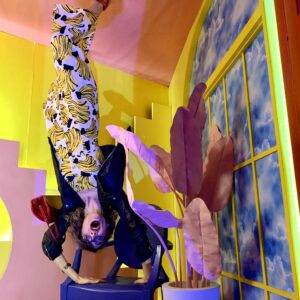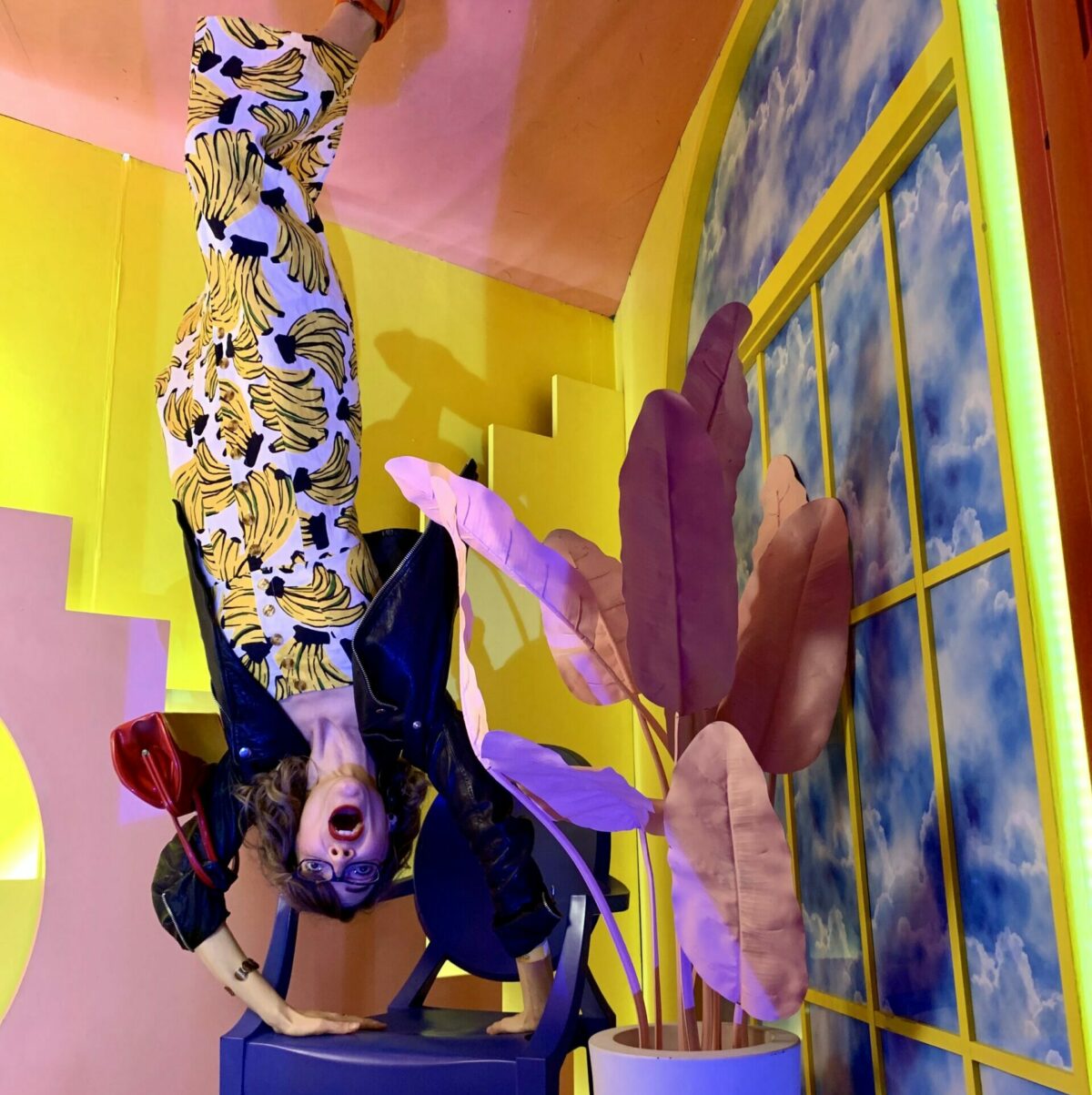Using technology to add interest to their movement-stories

“Working with and learning alongside children has been a life-worthy pleasure. Again and again, children have proven to me that the authority of their “inexperience” is edifying and inspiring. Listening to children’s stories has had a deep impact on how I engage students and design classroom environments, whether they be virtual or in-person.
The past year of learning, even in a pandemic, was no different. At least once a week, I taught two classrooms of five to seven year-olds creative dance. At the beginning of the school year, the class had never met in-person and some of my students had never been in a dual language environment (I teach in a Spanish Immersion context). Still, children improvised and composed their own short dances, in small breakout rooms via Zoom. It was challenging and delightful.
I’ll share how one small group of three dancers particularly surprised me; this dance experience demonstrates the importance of creating structures that support risk-friendly environments. Lydia and Lucía were new to our school and Irving often struggled to engage while learning remotely; yet he always lit up when it was time to choreograph. One day, these three children returned from their breakout room early and insisted on presenting their dance first to the audience (their classmates). What they performed was completely unexpected. The children did a few movements and all turned off their cameras at the exact same time. Then, the three children simultaneously turned their cameras back on and did several movements and turned their cameras off again in unison. Finally, Lydia turned her camera on and did a piece of choreography and froze; Irving turned his camera on and did a different, but related, piece of choreography and froze; and Lucía did another movement and froze. Together, they all bowed.
When the audience gave feedback, Ellis said “I liked how you used the screens in your dance. Who thought of it?”. Quietly, Lucía responded that Lydia had thought of turning on and off their videos. Irving explained it was “like a curtain going up and down”. This completely original idea came from the children. In the following weeks, students used technology in novel ways to add interest to the movement-stories they composed. Witnessing each other’s choreography inspired new and richer compositions.
This vignette illustrates that children engage and thrive in autonomy-supportive* environments, both online and in real life. I trusted young people to make mistakes and make magic in breakout rooms on Zoom. The students didn’t need me to help them figure out what they wanted to say. They had something important to share and my ideas may have interrupted or watered down their thinking and process. We had done work exploring dance structures and defining the elements of dance we saw in the world and each other’s compositions. But I didn’t teach the children any choreography. I asked questions such as: “Why do people dance? What stories do people tell through dance?” Children also gave each other feedback by asking questions and explaining what was interesting about each other’s dance compositions. The questions and feedback that children gave each other was as insightful as my own. Luna Dance has helped me to create structures and routines so that children can learn optimally from each other, so they can listen to and create new and true stories of themselves.”
*”autonomy-supportive” from Amado, Diana; Molero, Pablo; Del Villar, Fernando; Tapia-Serrano, Miguel Ángel; and Sánchez-Miguel, Pedro Antonio. (June 2020). Sustainability. Implementing a Teacher-Focused Intervention in Physical Education to Increase Pupils’ Motivation towards Dance at School
Cristina Paul, she/ her/ ella
Dual Language Teacher
UCLA Lab School
Summer Institute Alum 2020
taught synchronously and in-person, masked and distanced

